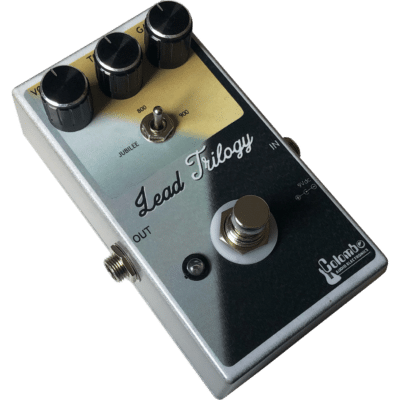- +39 393 323 1175
- info@colomboaudioelectronics.it
- Lun - Ven: 9:00 - 18:30
All audio clips are recorded with a Fender Deluxe Reverb amp on the edge of distortion.
Guitars:
Fender Stratocaster (3 Fender single coil pickups)
Gibson Les Paul (2 Gibson humbucker pickups)
Clean sound, no effects added
Clip 1
Guitar: Fender Stratocaster (Neck pickup + middle pickup)
Mix: 4/10
Time: 7/10
Feedback: 4/10
Volume: 5/10
Clip 2
Guitar: Fender Stratocaster (Bridge pickup)
Mix: 3/10
Time: 4/10
Feedback: 4/10
Volume: 7/10
Clip 3
Guitar: Gibson Les Paul (Neck pickup)
Mix: 3/10
Time: 3/10
Feedback: 3/10
Volume: 4/10
Clip 4 (Via Lattea Overdrive + Echo On)
Guitar: Gibson Les Paul (Neck pickup)
Mix: 5/10
Time: 3/10
Feedback: 3/10
Volume: 5/10
A bit of history…
Binson, a company from Milan – Italy, was one of the very first companies to design echo machines. Unlike most of the competition at the time, they used an analog magnetic drum instead of tape to generate their most famous product, the Binson Echorec.
With the aid of Meazzi Echomatic machines, Hank Marvin of The Shadows began using various Binson units both in the recording studio and live throughout much of the mid-1960s, in conjunction with Vox AC30 amps and Burns guitars. Marvin continued to use Binson until 1979 when, for ease of use, he adopted a Roland 201 echo.
The Binson units were used with great intensity by Pink Floyd first frontman Syd Barrett, and later by David Gilmour. The classic Binson delay effect can be heard on tracks like “Interstellar Overdrive”, “Astronomy Domine”, “Shine On You Crazy Diamond” and “Time”. Led Zeppelin‘s Jimmy Page used a Binson unit, which can be heard on the track “When the Levee Breaks”.
In Pink Floyd‘s 23-minute track “Echoes”, Roger Waters used a Binson Echorec to create the disturbing noise of the underwater wind during the first interlude with the aid of a steel slide. Waters is used to reproduce this effect in an authentic way during live performances. “One of These Days”, a song written around the same time as “Echoes”, features the prominent effect on the bass line. The Binson Echorec starred in Pink Floyd‘s first sound, until the band switched to the VCS3 synthesizer in 1972. Pink Floyd‘s Binson Echorec Baby was exhibited at the Victoria and Albert Museum as part of their exhibition. Mortal Remains of 2017.
Operation
The aim of the pedal is to reproduce the feeling and the particular sound of the Echorec in a more modern and practical format, being made in a standard stomp-box format. The signal remains analog all the way, the delay/echo repetitions are handled by a high efficiency digital chip which, thanks to a 44Kbit RAM memory, preserves the accuracy of the signal coming from the guitar. The repetitions are then reconverted into a sinusoid and reprocessed analogically to reproduce the typical deterioration effect generated by the magnetic drum of the reference unit.
Another interesting feature is the internal preamplifier which, in addition to contributing to the quality of the overall tone, offers the possibility to control the signal level; it is therefore possible to have a signal with louder or lower volume than the signal with the pedal switched off, a very convenient option for solo parts or for some lines that require a different volume.
Controls:
Mix: controls the amoount of the processed signal processed by mixing it with the signal without repetitions;
Time: allows to choose the time between the repetitions (from 30 to 550 milliseconds), high values lead to a more pronounced deterioration of the signal;
Feedback: acts on the amount of processed signal that is sent back to the input of the circuit thus recreating longer and more intense repetitions;
Volume: controls the onboard preamp volume thus the main level.




